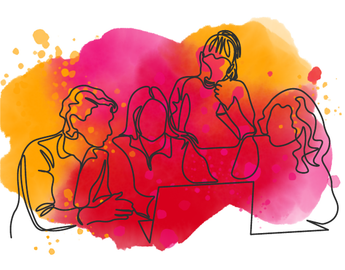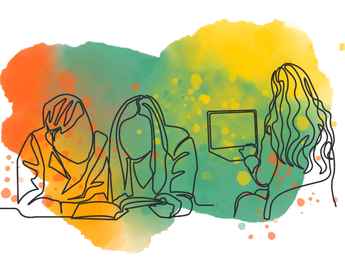Overview
The blended face-to-face model combines onsite and offsite (FTF and online) learning and is primarily based in a physical classroom. There is no prescribed split in terms of how much of the course must take place in class versus online; however, Martin et. al. (2020) state that a blended face-to-face model can consist of up to 70% of the course engaged in face-to-face learning with 30% of the course taking place online.
The blended face-to-face model refers to the use of more than one delivery method to provide and enhance student learning experiences. Activities such as readings, quizzes or other assessments can take place in-class or online. Face-to-face time is learner-centered and promotes a continuous learning approach that provides more opportunities for social learning, collaboration, and increased participation (Joosten et al., 2021).
A blended face-to-face model requires a balance between what the instructor does to support students and achieve course learning objectives during face-to-face sessions and what students are required to do during online activities (Bart, 2011).

Evaluating the context
Selecting a blended face-to-face learning model depends on the context:
Core elements of blended face-to-face design
Consider the benefit of providing multiple ways for students to engage with course materials in the blended face-to-face model. Below are some examples of how to create multiple means of engagement, representation, and action and expression depending on the context, time constraints, resources, and learning spaces in your blended course.
Active learning pedagogies such as team-based learning, process-oriented guided-inquiry learning, problem-based learning, and peer-led team learning are ideal for a blended face-to-face model.
For example, include opportunities for students to participate synchronously in class and then link that learning to asynchronous online activities (Brame, 2016).
In a blended face-to-face model, learning technologies are incorporated into both the online and face-to-face portions of the learning. Select technological tools that align the learning from inside to outside the classroom with course outcomes in mind.
For example, collaborative learning can begin in the face-to-face environment with whole group discussions after watching a video clip and then continue in the online learning space using technological tools that enhance collaborative and project-based skills.
In both the face-to-face and online settings, design and scaffold experiences for students in which they interact with the content, each other, and the instructor to achieve optional levels of engagement (Joosten et al., 2021).
For example, online discussions can occur over the learning management system and can continue face-to-face to demonstrate deeper understanding of the content.
Lesson checklist
-
Identify the core elements of blended face-to face design
-
Determine key considerations for learning activities
-
Distinguish types of assessments for blended face-to-face models




